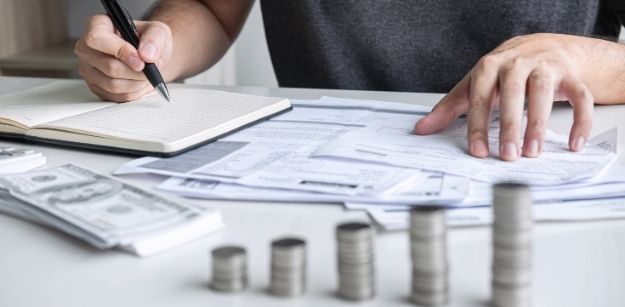What Is a Line of Credit (LOC)?
A personal line of credit is a loan, similar to a credit card. You get a specific amount of credit which you can use for any purpose. You can withdraw as much as you need, up to your credit limit as many times as you wish. The interest is charged only on the amount you use from your credit line and not on the approved credit limit. Whatever amount you borrow from your credit line, you need to repay it with interest each month. This flexible borrowing option makes the personal line of credit particularly useful for unexpected expenses, paying for home improvements, education, debt refinancing, vacation, new furniture or gadgets.
You can access funds from the line of credit at any time as long as you don’t exceed the maximum credit limit and meet other requirements such as timely repayments. Again, you can spend the money for whatever you want, in whatever amounts, big or small, as long as do not exceed the approved line of credit and keep repaying the borrowed amount on time.


How does a personal line of credit (LOC) work?
You can apply for a line of credit at a bank or a financial institution. Once the application and approval process is done, you get access to funds rather quickly – usually the same day or within a couple of days. Lenders usually check your credit and your repayment capacity before approving the line of credit. The line of credit is a revolving credit, like a credit card. This meansyou have to repay the borrowed amount with interest each month.
Unsecured vs Secured LOCs
Most personal lines of credit are unsecured.This means you don’t have to promise the lender any collateral for taking an unsecured line of credit. One exception is home equity lines of credit (HELOC), which are secured by the equity in your home.
From the lender’s perspective, secured lines of credit offer lender the right to seize the asset in case of non-payment
From the borrower’s perspective, secured lines of credit typically come with a higher maximum credit limit and significantly lower interest rate than an unsecured credit line.
On the other hand, unsecured lines of credit have higher interest rates than secured lines of credit. Also, you need to have a high credit score and good repayment history to meet the eligibility criteria for getting an unsecured line of credit. Since the unsecured credit line is not backed with collateral, if you default on payments, the lenders cannot recover their losses. Hence, the lenders minimize their risk by charging high-interest rates and restricting the credit line limit.
Pros and Cons of a Line of Credit
The biggest benefit of a personal line of credit is its flexibility; funds can be borrowed and repaid repeatedly. This gives the personal line of credit an edge over personal loans, which are given to you as a lump sum. Another benefit is that it can be used for any purpose, unlike home loan and auto loans.
Some advantages of a personal line of credit
- Borrow what you need
- Interest charged on borrowed funds only
- 24/7 access to funds
- Flexible repayment options
- Lower interest than credit cards
- Almost no restrictions on use
- Unsecured credit lines risk no collateral
- Best for covering temporary cash shortage
- Ideal for long-term projects where costs are recurring and variable
- Freedom to draw as high as 100% of credit limit without any restrictions
That said, personal lines of credit have certain drawbacks. Like credit cards, this revolving credit can affect your credit score negatively, if you do not manage it well and run up high balances.
Some disadvantages of a personal line of credit
- Annual/monthly maintenance fees regardless of use
- Not ideal for long-term cash shortfalls
- Requires good credit score to qualify
- High balance can lower the credit score
- Increased temptation to spend due to ease of access
10 Tips to Consider Before Applying for a Line of Credit
Once you’ve decided to apply for a personal line of credit, consider these tips before applying for it:
1. Check your credit score – Make sure that you pull up your credit report to check your credit score. If you have a good credit score, then go ahead and apply. If you have a poor credit score, it will make sense to take steps to increase your credit score first and then apply. This will help you improve your chances of getting a credit line at better terms.
2. Maintain or improve your credit score – Ensure that you do the following to maintain or improve your credit score:
- Don’t miss payments
- Avoid applying for new loan/credit 6 months prior to applying the credit line.
- Keep your existing credit debt as low as possible
3. Apply for a personal line of credit only when you absolutely need it.
4. Determine how much funding you’ll need and only borrow that amount
5. Compare the interest rates in the marketbefore deciding on the lender
6. Assess all costs involved in getting a credit line
7. Gather the applicable documents your prospective lender will require
8. Ensure that you know on what you’ll be spending your line of credit.
9. Have a repayment plan in place.
10. Choose a repayment option that suits your financial situation better.
Key Takeaways
- A personal line of credit is perfect when you have temporary cash shortfalls, or you have a variable, recurring expense.
- With a line of credit, you have immediate access to funds, increasing your chances of getting into excessive debt.
- The credit lines offer financial flexibility which is handy. That said, make sure you explore all your options, assess your financial situations and make an informed decision.



